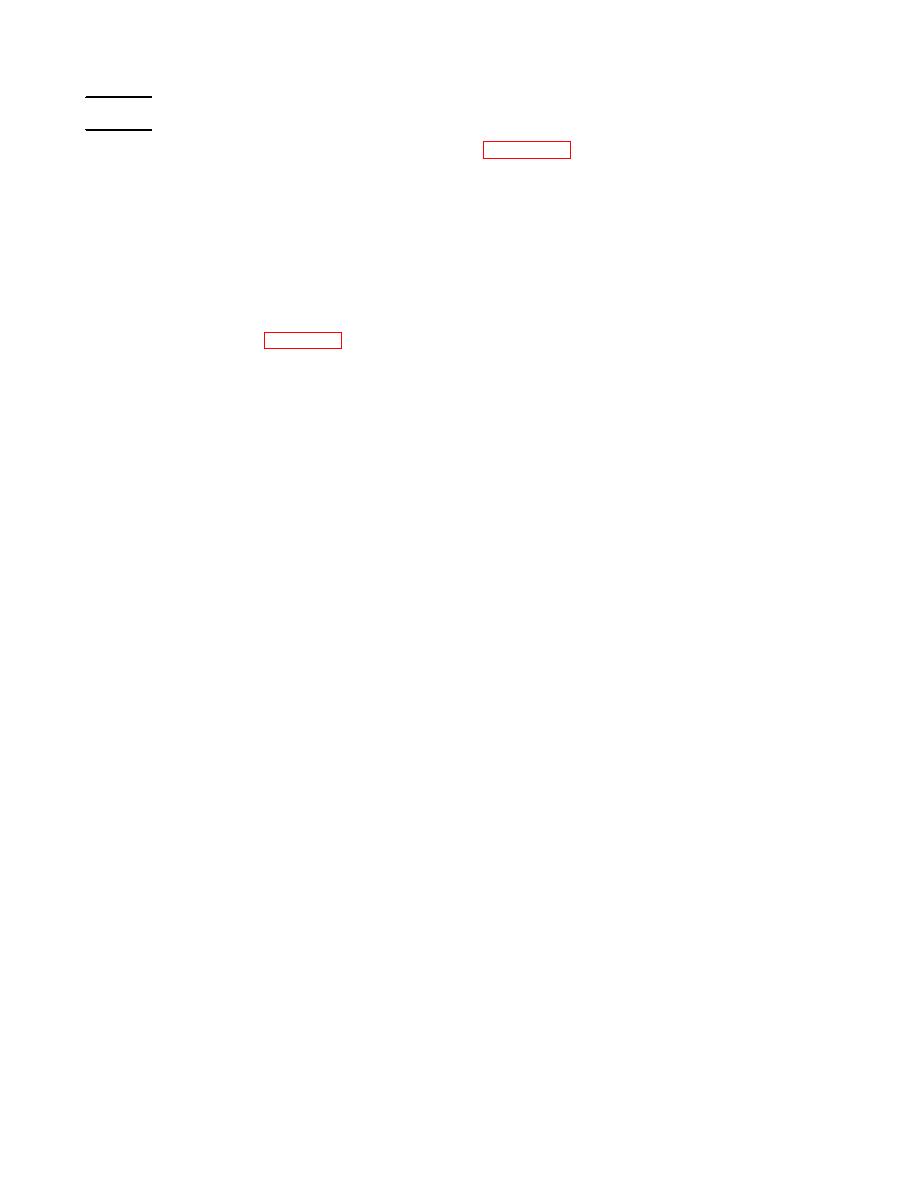
| Tweet |

Custom Search
|
|

|
||
 TM 55-1905-223-24-3
REPAIR
a.
Repair the crankshaft bore of the connecting rod (1, Figure 4-28) if:
(1)
The bore is larger than 3.3167 inch (84.244 mm).
(2)
The face of the connecting rod (1) is damaged.
b.
To make repairs:
(1)
Use the bushing driver, ST-1242, to remove the piston pin bushing (2).
(2)
Install the cap on the connecting rod (1) and tig ten the machine bolts (10) to the torque
h
listed
in Table 4-10.
(3)
Use the checking fixture, ST-561, to measure the length of the rod (1). Discard the rod if the
length is 11.991 inches (304.57 mm) or less.
(4)
Remove the cap from the rod (1).
NOTE
A maximum of 0.009 inch (0.23 mm) can be removed from the rod and
cap. Equal amounts of material must be removed from the rod and the
cap. The length of the rod must be 12.000 inches (304.80 mm) before you
can remove a maximum of 0.009 inch (0.23 mm) from the rod and cap. If
the maximum of 0.009 inch (0.23 mm) had to be removed, the rod must
measure 11.991 inches (304.57 mm) in length after machining.
The alignment of the bolt bores in the rod (1) and cap must not change.
Hold the rod (1) and cap in a clamp that holds the rod in alignment when
cutting material from the surfaces.
Use lapping compound to polish the surfaces that were machined. Apply a
blue compound to the surfaces and check them against a flat plate.
The area outside the centerline of the bolt bores (the area farthest from the
crankshaft bore) must show 100 percent contact. The remaining area must
show a minimum of 75 percent contact.
(5)
Install the cap on the rod (1) and tighten the machine bolts (10) to the torque listed in Table
4-
10.
(6)
Cut the crankshaft bore with the boring machine, P/N 3375115, that has a precision fixture to
keep the piston pin bore and crankshaft bore in alignment. The surface of the bore must be
smooth within 75 micro-inches.
(7)
Put the connecting rod (1) in the fixture, ST-561, and check the alignment.
4-80
|
||
 |
||